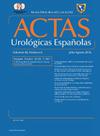侵袭性肌肉膀胱肿瘤膀胱保存的新前景和新出现的策略
IF 1.2
4区 医学
Q3 UROLOGY & NEPHROLOGY
引用次数: 0
摘要
简介与目的肌肉浸润性膀胱癌(MIBC)面临着巨大的挑战,传统上采用根治性膀胱切除术治疗,这一手术具有相当高的发病率和对生活质量的影响。保留膀胱入路的目的是在保持肿瘤疗效的同时保护膀胱。本综述探讨了MIBC保膀胱策略的新兴观点,重点关注患者选择标准、分子特征、非侵入性治疗反应评估、全身治疗、放射技术和膀胱内装置的作用。方法通过综合叙述综述,从新的角度探讨保膀胱治疗MIBC的策略。结果膀胱保留患者的选择标准仍然具有挑战性。虽然传统的方法侧重于选择具有较少临床病理风险特征的MIBC候选人,但一些研究表明,组织学变异和肾积水的存在可能不是绝对的排除标准。分子分类数据显示有希望,但缺乏足够的证据,而免疫细胞浸润可能提供潜在治疗反应的见解。MRI和放射组学为非侵入性治疗反应评估提供了可能。正在进行的试验研究了新的全身治疗方法、放射治疗方法和膀胱内装置在膀胱保存中的作用,一些初步数据看起来很有希望。结论:膀胱保留策略目前正经历着实质性的演变。实现最佳的患者选择可能需要整合临床、放射学、组织病理学和分子数据。可能在不久的将来,结合新辅助全身治疗、放疗、膀胱内装置以及可能由生物标志物驱动的策略指导的维持或辅助方案的多模式方法将成为标准做法。本文章由计算机程序翻译,如有差异,请以英文原文为准。
Nuevas perspectivas y estrategias emergentes de preservación vesical para el tumor vesical músculo invasivo
Introduction and objective
Muscle-invasive bladder cancer (MIBC) poses significant challenges, traditionally treated with radical cystectomy, a procedure with considerable morbidity and impact on quality of life. Bladder-sparing approaches aim to preserve the bladder while maintaining oncological efficacy. This review explores emerging perspectives in bladder-sparing strategies for MIBC, focusing on patient selection criteria, molecular characterization, non-invasive treatment response assessment, systemic therapies, radiation techniques, and the role of intravesical devices.
Methods
A comprehensive narrative review provides insights into novel perspectives in bladder-sparing strategies for treating MIBC.
Results
Patient selection criteria for bladder preservation remain challenging. While the traditional approach focuses on selecting candidates with MIBC with fewer clinicopathological risk characteristics, some studies suggest that histological variants and the presence of hydronephrosis may not be absolute exclusion criteria. Molecular classification data shows promise but lacks sufficient evidence, while immune cell infiltration may provide insights into potential treatment response. MRI and radiomics offer the potential for non-invasive treatment response assessment. Ongoing trials investigate new systemic therapies, radiation therapy approaches, and the role of intravesical devices in bladder preservation, with some preliminary data appearing promising.
Conclusion
Bladder-sparing strategies for MIBC are currently experiencing substantial evolution. Achieving optimal patient selection may entail the integration of clinical, radiological, histopathological, and molecular data. It is likely that shortly, multimodal approaches incorporating neoadjuvant systemic therapy, radiotherapy, intravesical devices, and possibly maintenance or adjuvant regimens guided by biomarker-driven strategies will become standard practice.
求助全文
通过发布文献求助,成功后即可免费获取论文全文。
去求助
来源期刊

Actas urologicas espanolas
UROLOGY & NEPHROLOGY-
CiteScore
1.90
自引率
0.00%
发文量
98
审稿时长
46 days
期刊介绍:
Actas Urológicas Españolas is an international journal dedicated to urological diseases and renal transplant. It has been the official publication of the Spanish Urology Association since 1974 and of the American Urology Confederation since 2008. Its articles cover all aspects related to urology.
Actas Urológicas Españolas, governed by the peer review system (double blinded), is published online in Spanish and English. Consequently, manuscripts may be sent in Spanish or English and bidirectional free cost translation will be provided.
 求助内容:
求助内容: 应助结果提醒方式:
应助结果提醒方式:


